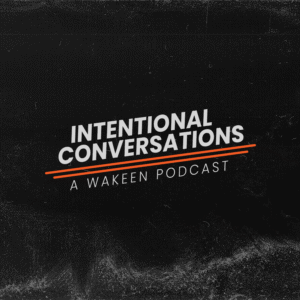Digital audience targeting is exciting! And complex…. Digital audience targeting is precise! And nuanced…. Digital audience targeting is personal! And intimidating…. Let’s face it, audience targeting in today’s digital world presents a great opportunity for marketers to deliver custom messages to a wide range of audiences, BUT, it also comes with intricacies and potential pitfalls that require careful consideration and planning in order to succeed. While we’d argue that digital audience targeting is equal parts science and art, we’ve laid out some of the core methodologies in this guide to provide you with a foundation to build upon.

“Why does audience targeting matter?”
Your brand is unique, your audiences are too. Don’t settle for scatter-shot marketing messages. Target audiences precisely, speak to them individually.
Demographic Targeting:
What is it?
Although each programmatic platform can offer slightly different targeting, the most common is demographic.
This would include being able to target a user by:
| Gender Age Household Income Occupation Job Title Race/Ethnicity | Homeowner data Interests Hobbies Shopping Habits Political Affiliations Religious Characteristics |
How does it work?
1st party or 3rd party data is used to identify users who match specific criteria. Some platforms allow you to serve ads down to a physical household level on whatever device registered to the IP address of the home (computers, phones, connected TV).
Why is it valuable?
Volume meets efficiency. It’s a cost-efficient way to build volume with limited waste.
Contextual Targeting:
What is it?
Audiences are reached by focusing on the internet content of the material the user is viewing. Ads are placed based on general categories such as health, finance, or automotive.
How does it work?
Ads are targeted to users who have engaged with content specific to a specific topic, product, or category of website. For example: Air Jordan may choose to place ads on sites containing basketball news or workout routines.
Why is it valuable?
Ads appear among relevant content to the user in real time. With the impending removal of cookies, strategic contextual targeting becomes an important tactic for reaching audiences.
Keyword Search:
How does it work?
Ads are served to users who have searched for a specific term recently. Not to be confused with SEM…these ads do not run within the Google search results, but they are instead served to users in their internet journey thereafter.
How does it work?
A list of keywords/search terms is utilized by a platform to identify and serve ads to those users who have searched recently.
Why is it valuable?
Users have already shown interest and can be reached with creative designed specifically by you as a follow-up or to reinforce your brand.
Domain Targeting:
What is it?
Ads are served only on a specific list of curated websites.
How does it work?
A network of sites is built through a platform or a digital vendor who has direct contact with each site. Site lists can be generated by name (Health Digest) or by category (Health & Beauty).
Why is it valuable?
Although the volume is typically lower, the quality of ad placement is a benefit. Less concern over fraudulent traffic or being surrounded by unsafe content.
Geofencing & Event Capture:
What is it?
Target users by the physical locations that they visit.
How does it work?
Drawing a digital fence capitalizes by identifying users who enter a specific location (fence) and can be served an ad in that moment + a period of time thereafter (up to 30 days). A popular spin-off of this tactic is called geo-conquesting, which refers to putting fences around competitor locations.
Why is it valuable?
Location=Relevance. Targeting similar businesses, locations or events can be an efficient way to populate a user group.
Retargeting:
What is it?
Users who have already visited your website are served another ad.
How does it work?
A tracking pixel is placed on your website, and when a user visits your site (or subpage), they can be identified and placed into an audience bucket to be reached again later.
Why is it valuable?
Conversions are more likely to come from these ads as the user moves through the journey.
Sponsored Content:
What is it?
Long-form content is created in collaboration with a publishing partner.
How does it work?
Engaging and interactive content is developed with the guidance of the publisher partner. The content lives on the reputable site and users are directed to the content through ads served programmatically.
Why is it valuable?
When done well, the content is informative and can position your brand as a valuable resource for your target audience.
Page Context AI:
What is it?
Page Context AI is the next generation of audience targeting. Certain platforms now have the capacity to integrate keywords and phrases as they relate to the specific content that is actively on-screen.
How does it work?
This execution is similar to keyword search targeting, but without a reliance on tracking cookies, allowing user interest to intersect content in real-time through AI learning.
Why is it valuable?
Intersect your audience and position your brand message where users are consuming relevant content.
Best Practices:
Lastly, here are some best practices for implementing effective digital campaigns:
□ Not all impressions are created equal
□ Targeting is not a perfect science, trial and error is your friend
□ Not all media channels are a great fit for every targeting option
□ Not all media channels are a great fit for every potential audience
□ Test multiple creatives
□ Consider tools to enhance user experience (i.e. frequency capping, dayparting, etc.)
□ Monitor activity and optimize based on performance (apply tracking pixels)
□ Find a reliable partner for execution





